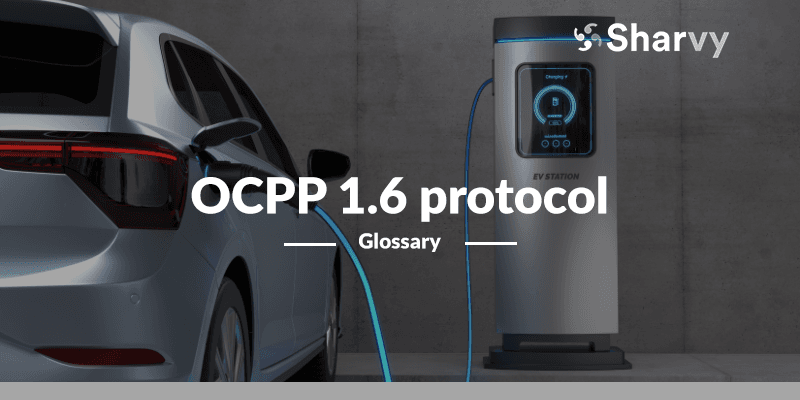What is the OCPP 1.6 protocol? – Definition.
The Open Charge Point Protocol (OCPP) is a standard for communication between electric vehicle charge points (CPs) and charge point management systems (CPMSs).
Thanks to this protocol, chargepoints can exchange information and receive commands, making them easier to manage and operate.
So when a car connects to a chargepoint, the latter informs the central system that the charging session has started, while transmitting useful information such as the user’s identity and the status of the chargepoint.
Throughout the charging session, the terminal continues to transmit data on the progress of the session, such as the amount of energy delivered, and can receive instructions, for example to change certain settings, such as to perform an update.
As a result, the OCPP protocol offers essential functionalities, such as management of charging sessions, remote control of equipment, collection of diagnostic data & user authentication, guaranteeing effective & adaptable supervision of charging infrastructures.
How does a charging sequence work using this protocol?
When an electric vehicle is recharged using the OCPP 1.6 protocol, everything takes place in a fluid sequence, designed to facilitate the driver’s experience & optimise management of the charging points.
It all starts (ideally) with a reservation : the driver can reserve a space equipped with a charging point via a mobile application (like the Sharvy app, for example) before arriving, which guarantees that a station will be available on arrival.
Once booked, the charging point is “locked” for the exclusive use of the driver (on the day of booking only), until they arrive.
On arrival, the driver must identify himself & be authorised to use the terminal. This can be done in several ways, for example using an RFID card, a dedicated application such as Sharvy, a QR code, a badge, etc.
Once identification has been validated, the recharging session can begin. During the session, notifications can be sent to the driver to keep him or her informed. They can receive a message when charging begins, when a certain charge threshold is reached (e.g. 80%), or when the session is over. These alerts make the process more convenient & allow drivers to manage their time more effectively.
When recharging is complete, the driver unplugs the vehicle & carefully replaces the connector on the terminal, ensuring that the system is ready for the next user.
Finally, thanks to the OCPP 1.6 protocol, it is also possible to set personalised limits for the session, whether in terms of cost (for example, a maximum of 30 euros), duration (one hour of charging) or the amount of energy delivered (a certain number of kilowatt-hours).
Finally, billing can be managed in the background thanks to the centralised system. The charging point transmits consumption data to the charging network operator, who then transfers this information to the service provider. The service operator then applies its tariffs and invoices the driver accordingly, guaranteeing transparent and accurate monitoring of the entire process.
What are the advantages and limitations of the OCPP 1.6 protocol?
For a company, this protocol offers a number of advantages.
First of all, its interoperability means you can deploy charging points from a variety of brands, while reducing dependence on a single supplier, which is a strategic advantage.
It also makes it possible to manage shared charging points remotely, enabling real-time monitoring, software updates and optimised maintenance, thereby reducing operating costs.
At the same time, the OCPP 1.6 protocol offers advanced functionalities such as charge management, prioritisation of charging sessions & integration of user identification tools, all in an architecture that can be adapted to technological developments.
However, this protocol is not without its limitations. It can be complex to implement and requires technical expertise, which can lead to high initial costs if the company has to use integrators.
In addition, although OCPP 1.6 is an open standard, interpretations can vary between manufacturers, which can lead to compatibility problems.
Compared to more recent versions such as OCPP 2.0, it remains limited in terms of cybersecurity & fine-grained transaction management, which may not meet the needs of companies with high requirements in these areas.

